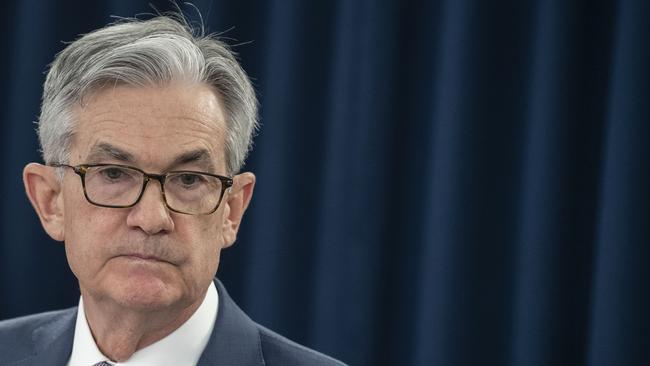
A slightly risk-on tone persisted Monday after a slight fall in US inflation expectations data.
Japan’s Nikkei 225 rose 0.7 per cent while markets in Australia and Asia were mostly closed.
The continued inflation surge evident in the US inflation data last week was too narrow to cause a simultaneous sell-off in bonds and shares because the market was positioned for worse.
But Citigroup’s chief US economist, Andrew Hollenhorst sees “asymmetric hawkish risk” for the FOMC meeting. Thus global markets could be a little edgy before Thursday.
It’s too soon to expect clarity on the pace or composition of the inevitable “tapering” of the Fed’s asset purchases at this meeting, which will conclude with a policy statement, economic forecasts and “dot-plot” interest rate projections at 4am AEST Thursday and a press conference soon after.
The US money market has priced in two Fed rate hikes by 2023, but Citi’s Hollenhorst sees a risk of higher than expected inflation forecasts and interest rate projections from FOMC members.
He also cautions that Fed chair Jerome Powell may concede that there may be some component of higher inflation that is not entirely transitory.
Hollenhorst’s base-case remains for a September announcement and December beginning to tapering of asset purchases at a pace of $US15bn per month, made up of $US10bn in Treasuries and $US5bn in mortgage-backed securities.
“Two months of much-stronger-than-expected core inflation readings mean 2021 core personal consumption expenditure inflation (the Fed’s preferred inflation measure) should be mechanically revised significantly higher from the 2.2 per cent median from the March meeting,” he says.
His own forecasts put core and headline inflation at above 3 per cent at the end of 2021, but Fed officials tend to be conservative and may show a median somewhere between 2.5-3.0 per cent.
But he notes that it’s harder to know how officials will adjust their inflation projections for 2022.
“Our base case is that the apparent tightness of the labour market, rising inflation expectations, and ‘bottlenecks’ that may stretch into 2022 will result in a slight upward revision,” he says.
And he sees little reason for substantial revisions to unemployment or growth forecasts, since activity data have been mostly consistent with expectations.
As for the Fed’s interest rate projections, he says the 2023 median “dot” is likely to show one hike – to 25-50 basis points from 0 to 25 basis points now – because the most recent dot plot in March showed 11 officials supported no hikes through 2023 and while seven favoured at least one hike.
“That means it takes just two dots moving higher for the median dot to imply half a hike and three dots for the median to imply a full hike – which we think is the most likely outcome at the meeting.”
“While unlikely, there is the hawkish risk that enough of these officials would enter dots high enough to shift the median up to imply more than one hike in 2023,” he says.
While there’s “no question” that Powell will continue to characterise it as transitory, two developments suggest he may adopt a “slightly more nuanced view” that would allow for the idea that some drivers of higher prices may not be solely normalisation of depressed prices or temporary effects of supply-chain “bottlenecks.”
First, he said in April that labour market slack meant persistently stronger inflation was a low risk.
But recent data make that argument much harder to make, as weaker-than-expected hiring with job openings stand at historic highs and wages accelerating is consistent with anecdotal evidence that labour shortages are an issue in a variety of sectors.
“If … Powell acknowledges this, and that it could have inflationary implications, that would be a modestly hawkish development,” Hollenhorst says.
Secondly, the increase in University of Michigan 5-10 year inflation expectations is likely to provoke questions in the press conference. Here Powell will welcome higher inflation expectations as an indication that the Fed’s “average inflation targeting” framework is successful.
Still, the conversation may provoke discussion that the Fed would be “ready to use its tools” – hike rates – which may translate as a somewhat more hawkish statement given the rising inflation expectations and tighter labour market backdrop.”
On its asset purchases, he says Powell may perhaps be ready to state that the committee discussed tapering in the context of an economy making “good progress” but that “substantial further progress” – the criterion for tapering – is still “some time” away.
“A hawkish surprise would be if Powell drops the ‘some time’ characterisation and instead indicates that tapering is likely in the foreseeable future,” he says.




A hawkish tilt from the US Fed this week may check investor complacency on the prospect of less central bank stimulus amid faster than expected economic recovery and inflation risks.